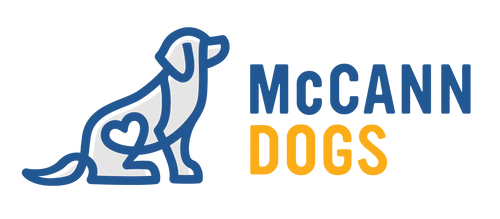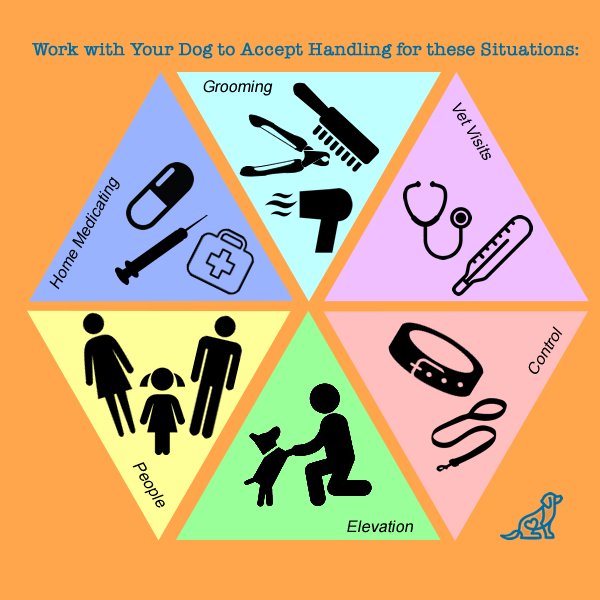Training dogs to accept handling is a crucial component of any training program. Puppies should be taught from an early age that handling is a positive thing. That way, you'll be able to comfortably administer medicine, groom, transport and allow for veterinary examination.
Accepting handling is natural for most young puppies, however as they mature, some dogs learn to take exception to being touched. A good training program includes plenty of positive association work for handling over several areas. Here are 6 that should be included in every puppy training program.
Grooming
All dogs require basic care. Even breeds with the simplest of grooming requirements will have to be accepting of ear and eye cleaning, toe nail trimming and various degrees of brushing. Some dogs will require more extensive grooming including trimming and blow drying. It's important that they are comfortable with any grooming you may have to do, so practicing techniques coupled with positive association rewards such as food and praise will go a long way with a young puppy.
Here is an earlier blog post where we talked about getting dogs comfortable with nail trimming.
People
Not all dogs enjoy being touched by strangers, but they should be able to tolerate it comfortably enough that it doesn't cause them stress or to bite. Acclimating to strangers and children is important for both their own well being and the well being of the community. Contact a qualified behaviourist If you are having serious problems with your dog around strangers.
Vets
All dogs will need to be tolerant of vet examinations. Conditioning vet visits will help eliminate stress. It's very important to take the time to teach dogs to be still and accepting of the vets touch. If a dog is already sick, it's very hard on them when stress is added to the situation. Take some time to teach them that vet style exams are positive and rewarding. Relaxed vet visits are important for your dog's overall health.
Here is a previous blog post where we talked about prepping your dog for the vets.
Lifting and Carrying
You never know when you'll need to carry your dog! Small dogs tend to be carried a lot, but it's not as commonplace with large dogs. If you need to lift your dog or carry them, you don't want them panicked and struggling. Take the time to teach them to be calm when elevated. For extremely large dogs, practice having two people lift them to ensure they are calm and accustomed to this situation.
Collars and Harnesses
Reaching in to take control of the collar or clip on a leash can be worrying to some dogs. Be certain this is part of your training program with a young dog. Make sure they are comfortable with collars being put on and taken off, leashes being clipped and head halters and harnesses being put on.
Home Medicating
Just like vet visits, at some point it'll be necessary to medicate your dog. It could be eye or ear drops, ointment on the skin or any other number of treatments for their well being. A little practice goes a long way to ensuring that when you need to, you'll be able to medicate your dog safely and calmly.
Make it a priority to dedicate a few minutes of practice every week to these 6 main categories. This will ensure your dog has a lifetime of understanding so that they'll be accepting of handling. Even the most low maintenance dogs will require handling. The extra work is guaranteed to payoff!
Here is more than 20 time World Agility Champion, Kayl McCann to take you through some of the steps for handling your young dog:
As always, Happy Training!


